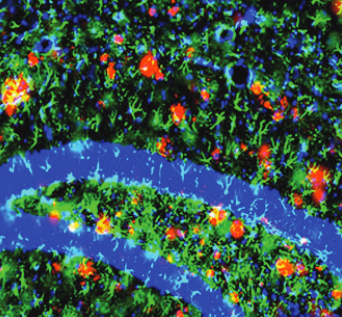how our approach is different
Scientific principles of nervous system injury and repair are shared by many different neurological disorders. This vision has led to creation of a research environment which fosters outstanding interdisciplinary collaboration in disease-focused research. When thinking of our approach, think of the movie Field of Dreams.
In the traditional model, an “all-star” research expert in a disease has an idea for a therapy and then seeks funding to pursue it. If funding is found and the research suggests moving on to the next step, the therapy is tested on animals, assuming that an animal model has been developed and access to test subjects can be gained. The final step is to assess the results of the work, which takes time and a different set of specialized skills. This costly and labor-intensive approach does very little to inspire any researcher to pursue research on rare disorders or consider the relevance of the work outside the realm of the specialty area.
At The Hope Center, we believe that “if we build it, they will come.” That means our philosophy is based on providing the enabling technologies and support systems (specialized equipment, human expertise, etc.) as well as the process for collaboration that will inspire researchers from a variety of scientific disciplines to bring their projects to the Hope Center, where those projects will be applied to the realm of neurological disorders. This translational approach is our own “field of dreams.”
Many Washington University scientists are leading authorities in fields such as molecular biology or engineering but may have little direct experience with problems of clinical diseases. To promote translational research, the Center encourages collaboration with investigators focused on disease and provides access to key core resources and animal models.
Amyloid plaques (shown in red) dot the brain of a mouse model of Alzheimer’s disease. Hope Center scientists have found that an antidepressant can reduce production of the primary component in these plaques.
Progress and Breakthroughs
Hope Happens and The Hope Center represent the best in the field of translational neurodegenerative disease research. The focus is neurodegeneration and neuro-repair. We now have the opportunity to translate discoveries from the world of basic science into real treatments and cures for people with brain and spinal cord disorders. The following diseases are studied at the Hope Center for Neurological Disorders.
Status of Current Research and Opportunities for Progress
Click on the disorder below to learn about progress we’re making related to the disorder (NOTE: This reflects just a tiny fraction of the progress being made at The Hope Center. Return to this page often as we will be updating it with more progress and breakthroughs).
-
Scientists at The Hope Center are among the world’s leaders in discovering the genetic basis of Alzheimer’s disease and the cellular pathways leading to brain cell injury. Current research focuses on innovative strategies to remove the toxic protein and arrest disease progression.
-
Hope Center investigators have characterized free radical pathways leading to nerve cell injury, identified a new class of free radical scavenger drugs with potential value for ALS and have examined connections between nerves and muscles. Current projects are testing newly discovered molecular pathways in ALS mice.
-
MS has been an example of a “success story” for neurological disease research. Until recently considered untreatable, now there are more than five drugs approved by the FDA to slow disease progression and improve symptoms. However, these drugs do not cure the disease and more research is badly needed
-
Washington University has one of the world’s largest and most productive stroke research teams in the world. Investigators study molecular pathways leading to neuronal injury, cellular mechanisms of death, brain imaging in stroke and human stroke recovery. New basis science projects will focus on identifying novel therapies to support neuronal regrowth and reconnection after injury.

